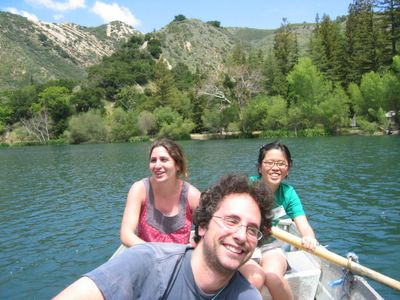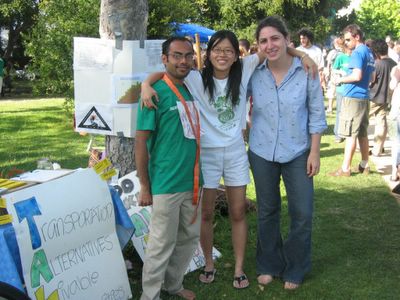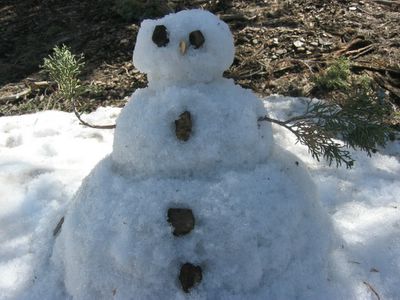Probably the most convoluted thing I have to deal with so far - apart from the cutting of trees in my neighborhood during upgrading - the National Recycling Program.
Most of you probably know of this program which involves a contractor from NEA and the town council that comes around every fortnightly to give a plastic bag where you can contain your recyclables and they will collect it from your door step.
There has been much grievances between these contractors and my parents. The accusations from my parents are as follows:
1) They haven't come ever since upgrading started a few months ago.
2) The last time they put their newspapers (3 or 4 bags of it) out for them to collect, they put it in the lift and forgot to take it away. This resulted in my family being scolded for littering in the lift.
3) There's only one plastic bag per household! How do we contain all our recyclables? Furthermore I scolded my mom for leaving the "trash" outside without using their bags. How would they identify? She also forgot to empty the recycling bin I set up in my house for other recyclables and I quickly emptied it in the bag provided and tied it to my mom's.
My personal complaint was:
3) The bag was only given yesterday for today's collection. It was a bit of a hurry since I only got it at 9pm last night.
4) On the bag it says 29 June and 1 July. So which exactly is it?
5) It says leave your recyclables outside at 8.30am and since then I have been staring at the door with no sign of them.
As the 'newly appointed' project manager for the whistle blower program (ha ha ha) of toddycats, I decided to be extremely proactive and called Altvater Jakob Pte Ltd which was listed as the contractor for my block. The first time I got the voice mail and was exceedingly upset. I left a message and realized that I forgot to leave my number (doh!) and called back again. This time, a lady named Janet answered the phone and was very helpful in answering my questions. My only disappointment in retrospect is that she did not apologized for her men leaving the bags in the lift. However, I was satisfied by her not giving lame excuses but instead sounded appalled that they forgot. She also gave me the impression that she could not forsee what happens in the field. The workers told her they left the bags every fortnightly and she has to take their words for it. In retrospect again, she told me they will replace a bag immediately after collection but I did not see them give me any. Bah. I do not wish to have to call them every alternate week to come and collect.
I found out a lot of things from my phone conversation with her:
1) the program at my neighborhood is (just like Budak's whom I got a second opinion from) every alternate wednesdays. She claimed that there were collections on two other occassions this month but then my mother claimed there were no plastic bags given. I will monitor for the next collection.
2) the collection is not at 8.30am. It is from 8am to 8pm. Leaving it outside the whole day will ensure it to be collected.
3) They should not have abandoned it in the lift.
4) The date on the plastic bag is not always accurate. But now that we know it is every alternate wednesdays, it should not be as confusing. Better mark my calendar now.
5) you need not use their plastic bag only. Each household is only allowed one plastic bag. HOwever, if you use your own plastic bag, all you have to do is put a note there with big bold letters that says RECYCLING and they will collect it.
6) Sometimes they run out of plastic bags when they distribute and if the date is wrong, it is because they don't have any markers on hand to change the date. Shouldn't that be improved?
7) I can't know who was right or wrong about the last few months but it was good that I found this bag yesterday. at least now I know I don't have to go all the way to the MRT to dump my drink cans at the recycling bins there. It was also a relieve to see on the bag written that clothes, cans, plastic and glass bottles are also accepted on top of paper products.
Janet was nice enough to get my block and unit number and within 30 minutes of the call, my recyclables were collected. This makes me a little weary that otherwise it would not have been collected.
Lets just hope they don't fail me in 2 weeks. I would hate very much to call again. If it does happen that way, I will be sure to complain all the way to NEA and Town Council and I would not hesitate to demand for a change in contractors if they do not improve.
[update: I just heard a rustle, they came to collect!!! boy my complaint was superbly effective. now i just have to go make sure they don't leave it in the lift or in the void deck.]
[update 2: I just did a round downstairs, checked both lifts and found no sign of any bags of recyclables abandoned, but neither do i see any trucks with loads of recyclables. It's gone...!]
[update 3: I just met the contractor, an old chinese man, who collects things at my block. He came and did a round. Got to talk to him personally and found out that he really didn't do it during upgrading because he felt that because everything was blocked off so nobody would put the recyclables out. I asked him if he had any extra plastic bags and he told me to go downstairs with him to his truck and I got a whole stack from him. The truck is not that big even and is unmarked and he only has one indian worker to help him. I saw that he managed to collect from some others as well which means that there are people who are recycling. That's good to know.]
Read full article here



